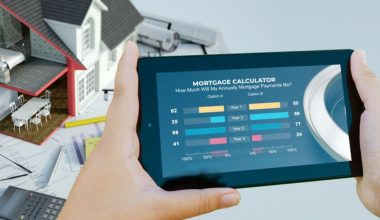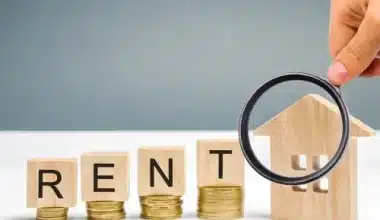A consumer typically pays a certain amount as a down payment at the start of a pricey good or service transaction. How do you calculate a down payment? The down payment is calculated using the formula below:
What Is Down Payment
A down payment is the first, non-refundable payment made when buying something expensive, like a house or car. The rest of the money is financed by a bank or other financial institution. Because the customer is paying a percentage of the purchase price up front, the lending institution feels secure. When buying real estate, homebuyers often put down 5% to 20% of the total purchase price. To cover the outstanding balance, the bank or other financial institution offers a mortgage.
The following are some typical ways a home buyer can obtain funds for a down payment:
#1. Create a Tax-Free Account.
The money the buyer has saved in tax-free savings accounts can be used as a down payment.
#2. Consistently Save
You may amass a sizable quantity by setting aside a certain amount of money each month.
#3. Ask For a Loan
The home buyer has the choice of getting a family loan and putting down more money. If the buyer can get a lower interest rate, he or she won’t have to pay mortgage insurance.
#4. Join a First-Time Homeowner Program.
A part of the purchase price can be given to first-time homebuyers under the program as a down payment.
The Advantage of Saving For a Down Payment on a Home
The following are some advantages to putting money down when purchasing a home:
#1. Monthly Obligations That Are Lower
The amount of the mortgage or loan that must be repaid to the bank is reduced by a sizable down payment. As a result, the loan’s monthly partial principal and interest payment is reduced.
#2. Minimizing The Requirement For Private Mortgage Insurance
In some countries, like Canada, the bank may ask a buyer who puts down a small amount of money—5%, for example—to provide a guarantee or security in the event of default. The buyer must get mortgage insurance to protect the lender in case the buyer doesn’t pay back the loan.
#3. The Property Has Greater Equity
With a 20% down payment, the buyer would own 20% of the property and the lender would own the other 80%.
Disadvantages of a Down Payment
The following are some disadvantages of making a down payment:
#1. Less Funding For Other Expenses
Less money will be available for additional charges, such as moving expenses, remodeling, or decorating the house.
#2. More Time For Money Saving
Savings are depleted after a down payment, and it will take some time to start saving again.
#3. Capital Invested in Equity
With a down payment, the buyer gets a share of the property and can make money as the property’s value goes up in the future. However, the rise in real estate values is steady and takes a long time. As a result, funds that may be used to purchase other financial goods are held back for a very long time.
Benefits of a Big Down Payment
Your monthly payments, overall interest expenses, and, in some cases, the requirement for insurance will all be decreased if you can make the maximum down payment possible. Here are the specifics:
#1. Interest
You’ll need to borrow less money and pay less interest if you make a larger Fee. For instance, the first year’s interest on a $100,000 loan with 5% interest would cost you $4,000; The interest you pay in the first year, however, will only be $4,000 if you put down an additional $20,000 and only borrow $80,000.
The difference gets much more obvious over time. For instance, the interest on a $100,000 loan at 5% interest over 30 years would be $93,256. Just borrowing $80,000 will result in a $74,605 total interest payment, which is nearly $20,000 less than borrowing $100,000.
#2. Periodic Payments
In a similar way, if you put more money down, your monthly costs will go down. In the example above, a loan for $100,000 would have monthly payments of $537, but a loan for $80,000 would only have monthly payments of $429.
#3. Mortgage Defense
A bigger DP on a property can help you avoid paying for private mortgage insurance (PMI), which protects your lender in case you can’t make your loan payments. In general, if you can put 20% or more down, your lender won’t require PMI. (Remember that if you can’t afford a 20% DP and must purchase PMI, you can ask your lender to remove the requirement once your home’s equity reaches 20%.)
Alternatives to a Down Payment
There are other options if a sizable down payment is out of your price range. Low-down-payment loans are frequently available, as was previously indicated, albeit they can become more expensive with time.
If you can’t afford a big down payment on a house, you can save money by borrowing as much as you need and making extra payments on your mortgage over time. If paying off your mortgage more quickly is your objective, doing so will lower the amount you owe.
Also, if your income increases over time, for instance, you might be able to accomplish that. This is frequently referred to as “accelerated amortization” or “accelerated .” When you’re in a position to do so financially, refinancing your mortgage with a larger pay on the new loan is another way to save money.
What Is a Down Payment Example?
A common example of a down payment is a DP on a piece of property. A down payment for a home can be between 5% and 25%, with a mortgage from a bank or another financial institution covering the balance. Down payments for cars work similarly.
Is 20% Enough for a Down Payment?
The “20% down” rule is a total urban myth. The 20% down payment is often required by mortgage lenders because it lowers their risk. Additionally, it is a requirement that most programs will charge mortgage insurance if you put less than 20% down (though some loans avoid this). However, it is not a necessity that you pay down 20%. Down payments for large finance programs might range from 0% to 3, 5, or 10%.
The main benefits of putting 20% down on a property are having a smaller loan amount, lower monthly payments, and no mortgage insurance. Think about the situation where you are purchasing a $300,000 home at 4% interest. If you make a 20% down payment and do not have mortgage insurance, your monthly principle and interest pay will be $1,150.
What Is Another Term for Down Payment?
Terms related to down payment: Deposit, agreement, down payment , cash up front, and security
What Is the Difference Between Down Payment and Deposit?
A deposit protects the seller by making the buyer responsible for following the terms of the purchase and sale agreement once the deal is done. Depending on how the contract is written, a deposit is usually due either right away or within 24 hours of the subject being removed. While a down payment is the total amount of money that the buyer pays up front to go toward buying a property, it is not required if the subjects do not leave.
When the purchase is finalized, the down pay will be added to the total price of the home. This can take the form of cash savings or other assets, such as money kept in a Registered Retirement Savings Plan (RRSP) and withdrawn as part of the home buyer’s plan. The down payment is often made up of your deposit plus any additional monies you provide toward the purchase price, with the balance typically paid through mortgage financing.
Is Installment and Down Payment the Same?
They aren’t the same. After Revenue accepts your PPA, your down payment will be taken out of your bank account three business days later. While your installment will be picked up on the date you specified when applying. You can adjust this date after a PPA has been granted to suit your needs. The DP typically covers a sizeable amount of the total purchase price, such as 20%. If the loan isn’t paid off early with a large payment or by refinancing, the remaining balance is paid off in regular installments over time.
Is a Down Payment Refundable?
A down payment is the first, non-refundable deposit made when buying an expensive item like a home or car. The rest of the cost is paid for by a loan from a bank or other financial institution. The financing company is confident because the consumer is paying a portion of the purchase price up front.
How to Calculate Down Payment?
Using a down payment calculator is the best and quickest way to calculate the down payment amount and the EMIs that must be paid over the length of the loan. It is a helpful tool that aids buyers in quickly calculating the down payment. Online DP calculators can help buyers figure out costs like the amount of cash they need, processing fees, down payments, EMIs, and more. If the down payment requirement is 3.5 percent, you need $3,500 for every $100,000 in home worth.
On instance, in San Francisco, the DP on a home selling for $850,000 with a 3.5 percent down payment is $29,750 ($850,000 x 0.035 = $29,750). The leftover purchase price should then be used to calculate closing fees.
Conclusion
Your down payment amount for a mortgage is a personal and practical choice. To determine how much you should spend, take a comprehensive look at your monthly budget, your other debts, and the cost of living in your city. With the help of tools like Bankrate’s affordability calculator and a reputable mortgage expert, you can figure out the right amount for you. The choice ultimately depends on your motivation, your self-control, and your financial resources.
Remember that there are additional costs you’ll have to pay before receiving the keys to your new residence; the DP is just one of them. Remember to account for closing charges as well. After you have completed your DP, lenders will check to see that your bank account has enough money in it to cover these costs, which in certain areas can amount to tens of thousands of dollars.
Related Articles
- Secondary Mortgage Market: Step By Step Guide On How It Works
- MORTGAGE RATES FOR INVESTMENT PROPERTY: Current Mortgage Rates for Investment Property
- No Down Payment Mortgage: Getting a Mortgage With No Down Payment In 2022
- NET 30 PAYMENT TERMS: Meaning, Examples & Reasons Why You Should Use Them or Not






